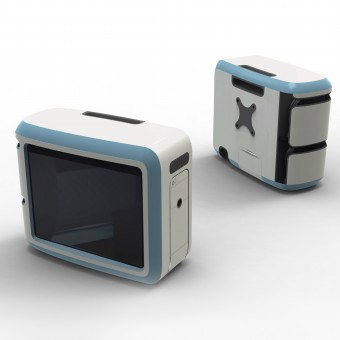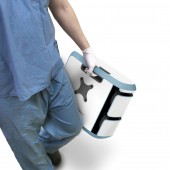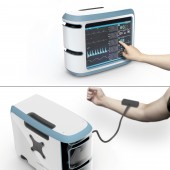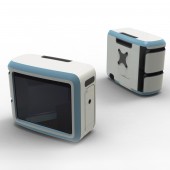DESIGN NAME:
Vital Sign Monitor
PRIMARY FUNCTION:
Monitoring of Oxygen content in Tissue
INSPIRATION:
Many current oxygen monitoring systems evaluate oxygen levels in blood. However, when monitoring the brain or other specific organs it's much more relevant to monitor the tissue and gives a better metric of the health of that part of the body. This is crucial for example in the care of premature infants.
UNIQUE PROPERTIES / PROJECT DESCRIPTION:
The oxygen monitor is a non-invasive device used in clinical and laboratory environments to measure the amount of oxygenated and de-oxygenated tissue in the body and brain. It does so by using a patented technology along with near Infrared spectroscopy to manipulate light and measure how well the sample scatters and absorbs the light. Since it measures the oxygen content directly, it does not require any calibration or estimation of the scattering of light. This device is used in the monitoring of premature infants, sleep apnea patients, sport medicine, brain oxygenation and many other instances where oxygen content in tissues, not arteries is required.
OPERATION / FLOW / INTERACTION:
-
PROJECT DURATION AND LOCATION:
-
FITS BEST INTO CATEGORY:
Medical Devices and Medical Equipment Design
|
PRODUCTION / REALIZATION TECHNOLOGY:
Optimal Design's innovation team developed a solution that converged several different devices and functions into a single, mobile, ergonomic and user friendly design. The aesthetics of the enclosure are designed to fit with other components in the modern medical environment. The design also communicates that it is an approachable yet sophisticated piece of hardware. An ergonomically placed handle at the balance point gives the product mobility which is required in clinical and hospital settings. Also, all of the sensor cords are stowed in discreet pockets that form the left side of the enclosure, giving it a uniform appearance all around. The device is easy to deploy or move as it now only requires the stowing of a few cables and turning off of the power button. In contrast, the previous version of the device required the setup of a laptop, data acquisition module, power supply, and many cables. Touch points, such as the drawer, sensor holders, power buttons, etc. are accentuated for ease of use and are intuitive for the end user. The thermal management is unique in that it involves the use of the same internal aluminum chassis that is used to mount all components including the outer plastic housings. This internal chassis was designed as a heat sink to pull heat away from the sensitive electronics. An internal fan pulls air over the chassis and electronics in order to take the heat out of the enclosure to maintain good thermal performance. The entire enclosure can either be set on a desktop or mounted to a cart or pole. The mount locations on the back of the unit are large and easy to access and again use the strength of the metal chassis to provide the structural support.
SPECIFICATIONS / TECHNICAL PROPERTIES:
This product is 15"x12"x8".
TAGS:
-
RESEARCH ABSTRACT:
-
CHALLENGE:
The proof of concept design of this device involved several separate devices connected together in order to perform the intended tasks. This configuration was very cumbersome and difficult to setup as well as transport. The end users also found the device to be intimidating as there were no easily identifiable touch points and it had a basic user interface.
The challenges on this product were threefold. First, the Optimal Design engineering team had to consolidate a laptop, touchscreen, power supply, and the actual photon emitter and collection system. This had to be completed ensuring a minimal product package and good thermal management and heat dissipation Secondly, our industrial design team had to develop an ergonomic enclosure that looked friendly and approachable as well as having an intuitive UI. Finally, Optimal Design was also challenged with designing the product to be easily manufactured, ensuring the sensitive components were not damaged during the assembly processes.
ADDED DATE:
2013-02-25 11:40:02
TEAM MEMBERS (3) :
Sajid Patel, Brian Retzke and Bridget Soldan
IMAGE CREDITS:
Sajid Patel, 2012.
|









